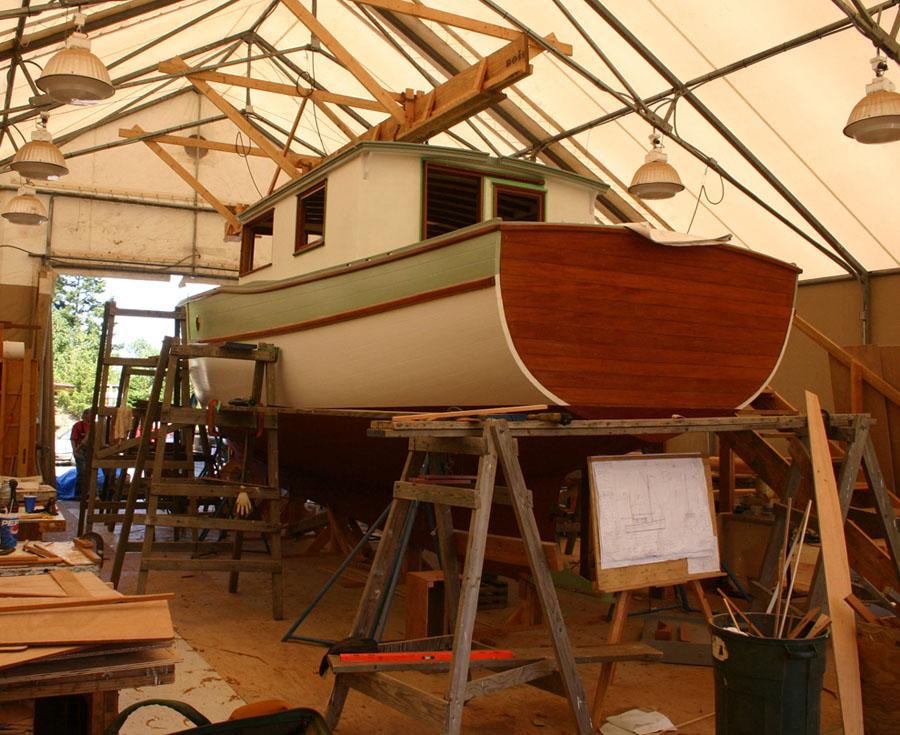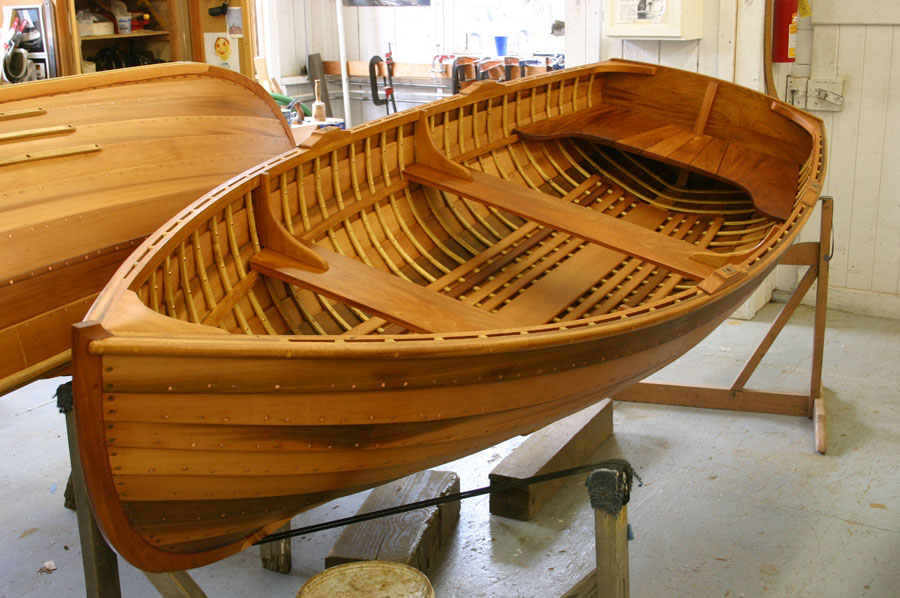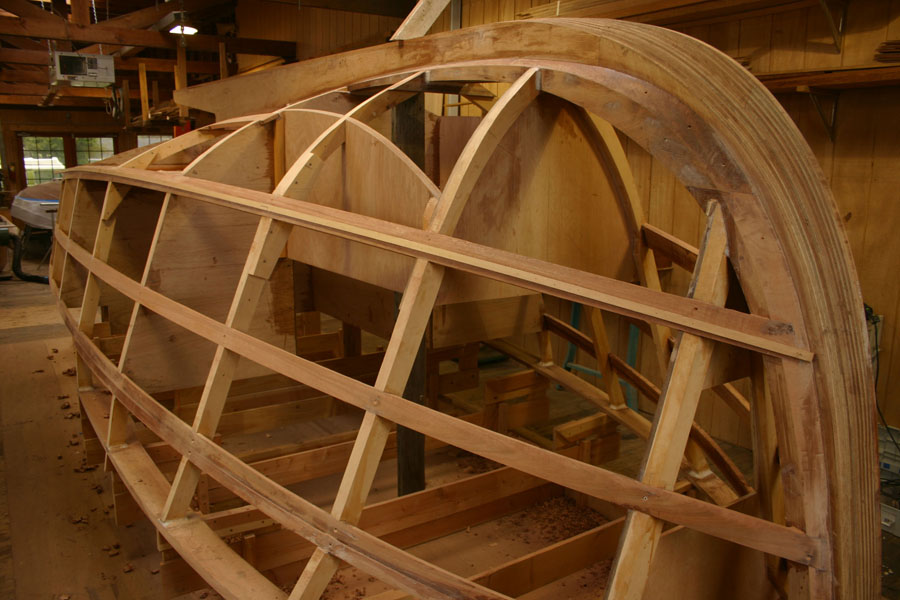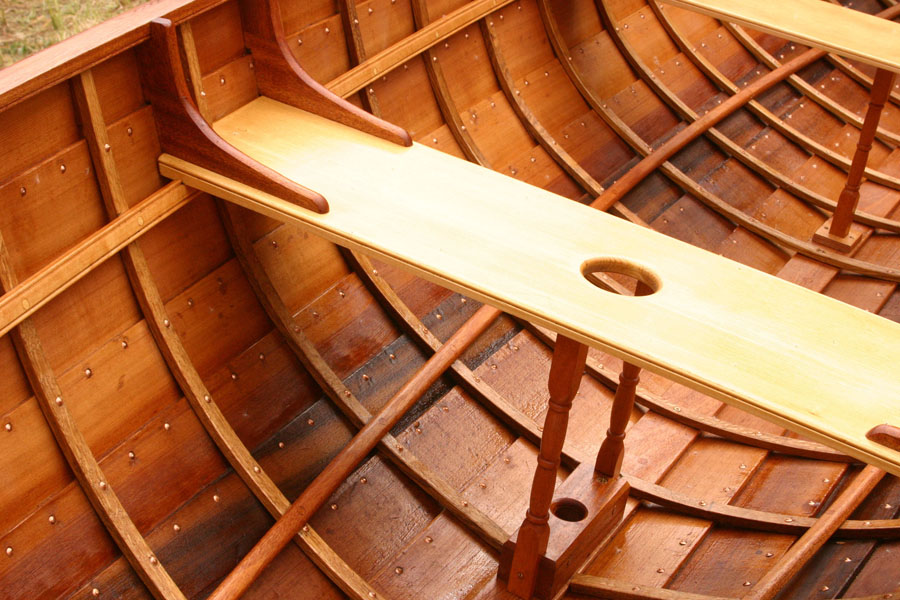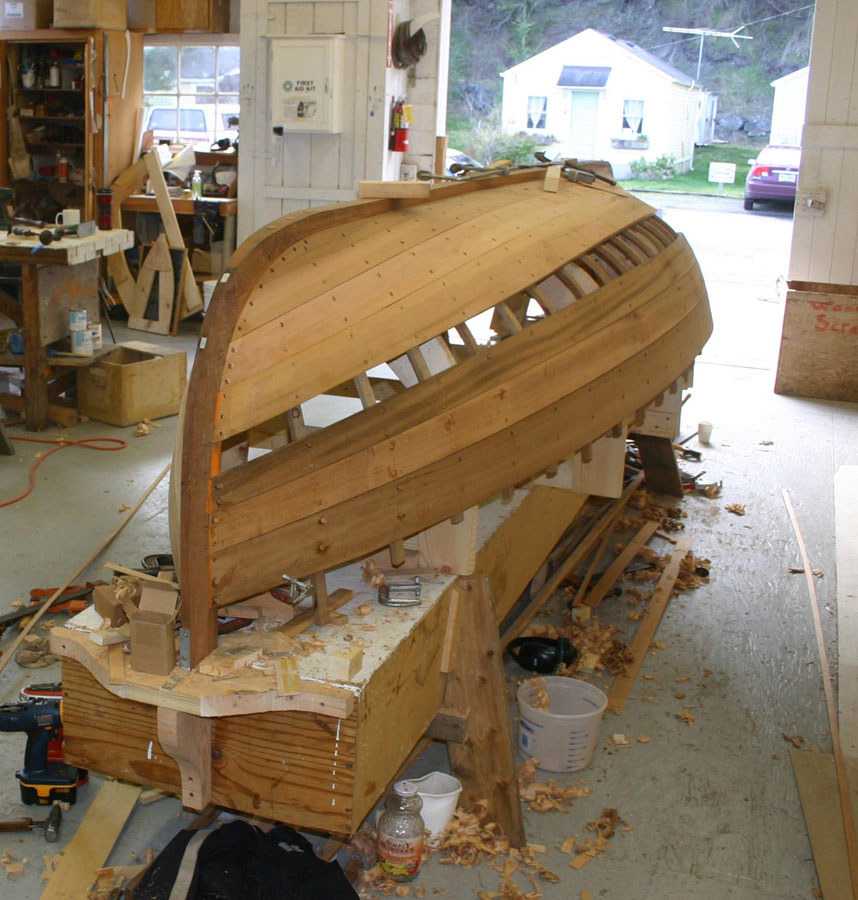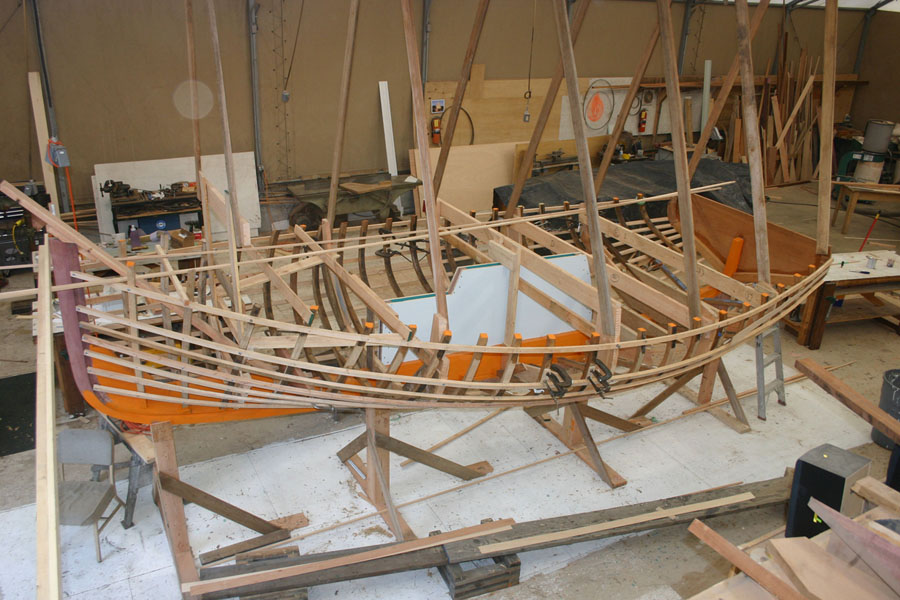
When you call a school for a magazine interview, you really don’t expect to find one of their students acting as spokesperson, but that’s exactly what happened when I contacted the Northwest School of Wooden Boatbuilding. The student, Pete Leenhouts, is a 54-year-old former Navy captain who served 27 years in the service before retiring in 2004. While it was certainly no surprise that a Navy captain knew a lot about boats, I was amazed at how well versed Pete is on both the school and its history.
“One of the things I always wanted to do was build boats,” Pete confessed when I asked about his connection with the school. “My father was a doctor whose hobby was woodworking, and most of my life I was a hobby woodworker. There’s always a shop on a Navy base, so I always had access to tools and wood where I could make furniture and toys.
“During the time I was in command of a minesweeper in the Seattle area, I became aware of the Port Townsend wooden boat festival and was introduced to the school. I decided it had the program that interested me most. In fact, it has three one-year programs: traditional large craft, traditional small craft and contemporary or composite boatbuilding. Each course is a full 12 months, and I have taken all three. I am paying tuition, so I am unbiased, and I can tell you I walk into the shop every day and say to myself, ‘I can’t believe I am lucky enough to be here doing this.’ That feeling is also pretty much universal among the other students and the instructors.
“As for its history, the school was started in 1981 by Libby Palmer and Henry Yeaton. Those two approached Bob Prothero, a master boat builder from Seattle who’d been building boats for some half a century. By 1970, wooden boatbuilding of large boats as a commercial industry was just about dead. Libby and Henry wanted to preserve wooden boatbuilding and felt others wanted to as well. They convinced Prothero, with their help, to start the school in 1981.
“Initially, the school was designed to train professional boat builders, in spite of the fact that the wooden boat building industry had shrunk to the point where mostly recreational boats were being built. Nonetheless, a good number of young people were very interested in learning the craft. Bob would take someone just out of high school and teach him or her how to build a boat in a traditional master and apprentice format. There were few classes as such. Most students started with stars in their eyes about the mystique and thrill of actually following their dream, and about 80 percent of them ended up working in local boatyards.
“Gradually, the student body changed, and the school started hiring teachers and expanding classes. There are currently five full-time instructors and about 40 to 45 students, both men and women, ranging in age from 18 to 72. Each class has a primary instructor ,and two classes also have an assistant instructor. The school is fully accredited, and offers six-, nine- and 12-month diploma courses.
“Courses at the school teach how to build both traditional and contemporary styles ranging from eight-foot to 50-foot boats. Tuition is about $4,000 for a three-month semester. A full-time student will spend $16,000 per year. There are several scholarships offered, funded by the local Rotary Club, a yacht club, and even the school itself. If someone really wants to come here, the school will find a way to make that happen.
“The school itself consists of three main buildings sitting on six acres right on the water at the lower end of Port Townsend Bay, a part of the Puget Sound on the east side of Washington’s Olympic Peninsula. We are currently in the fundraising phase in order to build a large modern boatbuilding facility that will allow us to expand our student body, which currently is at its maximum. The site is already prepared. The building will have tall windows to take advantage of natural light and open shop spaces.
“Students are taught to use a full range of hand tools and power tools when they first arrive. In some cases, we start with people who’ve never worked wood or handled tools, and they end up with the ability to work in the field. These days, about one third are still young people hoping to do this as a profession, a third are looking for a career change, and a third are retired people interested in boat building more as a hobby than a profession. I am in that last third, and I see myself working in historical restoration and building small boats on the side.
“While many students go on to boat building, some go into high-end residential and commercial woodworking. The reason is that there is a perception that boat building embodies the most difficult aspects of woodworking, in part because it involves so much solid, watertight curved joinery.
“The first thing the students will learn is how to loft the boat, which means drawing it out full-size on plywood. That’s to figure out how the parts are made. Next they’ll build the stem, which is the bow or front of the boat; the keel, which is the spine along the bottom of the boat; and the transom, the wide flat section at the back. After that comes a form or mold on which the boat’s planking will be built. All of this is done upside down. When the boat comes off the mold, it is turned right side up and the bent wood frame is installed with copper rivets. Finally, the seats, rails, gunwales and oars are made, and the boat is finished.
“Once the students complete a boat, it is sold. In fact, most are sold before they are built. While a few are on spec, the majority are commissioned. A 14-foot cedar skiff, which is a type of rowboat, goes for about $3,200 dollars, including oars. At the high end, a 23-foot open powerboat with a 90-horsepower engine, designed as a fishing boat, will go for $40,000. A 36-foot motorized sailboat that was recently launched went for over $100,000.
“In addition to the three primary courses, there are shorter courses which range from a day to a week and run about a hundred dollars a day. Those tend to focus on specific tasks involved in the larger sequence of building a boat. One coming up this summer will build a Whitehall, a boat originally developed in the 1880s as a rowed water taxi in East Coast harbors. The course will run in nine sessions from June through August. You can take it day by day, a part of a session, a complete session, or the whole run.
“There are also courses on things like building kayaks and other styles of boats, rigging, sail making, oar making and even blacksmithing.” In fact, the school is currently making sails for Washington’s own two tall ships, the Lady Washington and the Hawaiian Chieftain, both of which are scheduled to participate in Tacoma’s Tall Ships event in July of this year.
School implies tests, and being able to pass them. In this school, that process is about as unambiguous as it can be. “The boats students make have to float, not leak, and look good, pretty much in that order,” Pete explained. ” The final exam is putting the boat in the water, and there’s no way to cheat on that test.”
